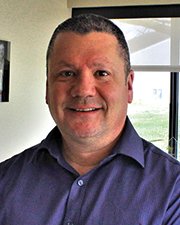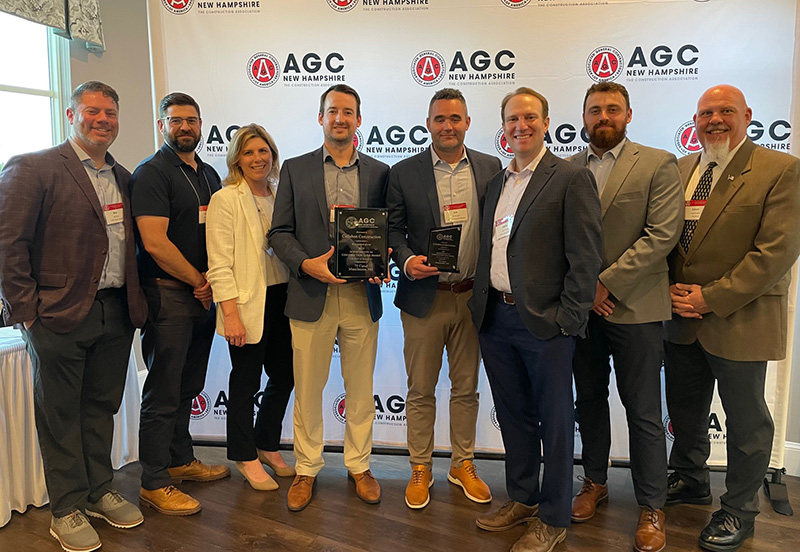News: Construction Design & Engineering
Posted: November 14, 2013
Delivering dollars from the sun: PV systems produce free electricity and enhance building value
Constantly challenged with rising costs and a highly competitive market for commercial space, building owners and operators know that they need every possible square foot of space to earn a return. Advancements throughout the solar energy industry now mean that cost centers can become profit centers as innovative and attractive photovoltaic (PV) systems enable the production of free electricity while enhancing building value and amenities. Tilted, low-profile PV systems on low-slope roofs are the preferred and most cost-effective way to deploy PV because these arrays provide electricity close to where it is needed, are quick to install without affecting roofing warranties, and can provide highly attractive returns. Carport mounted systems deployed in parking lots are slightly pricier but still provide a nice return and do double-duty as an attractive amenity for building occupants and guests. In addition, with appropriate design, such carport systems can function as an auxiliary component of the site's snow and storm-water management systems by directing and infiltrating run-off while enhancing site lighting for security.
Mass. and other New England states are excellent locations for the commercial deployment of PV systems. While it is true that more sunlight falls in the U.S. southwest and sunbelt states, there is more than enough sun here to make PV systems pay for themselves many times over. The availability of federal tax incentives and state and local benefits make an investment in PV highly lucrative; depending on financing options, typical cash-on-cash returns are in excess of 50% within one or two years.
While the sun is not about to stop shinning, changes in the tax code and solar renewable energy certificate (SREC) program are likely to make returns less attractive in the future meaning that systems should be deployed now in order to lock in known benefits. Fortunately, there is still a short amount of time to take advantage of these inducements before they phase out at the end of the year.
The Mass. SREC program is going into a transition phase. Phase I was a huge success and led to the deployment of 400 megawatts (MW) of solar-powered generating capacity years ahead of schedule. However, while the rules of the SREC-II program are being worked out, systems with sizes below 100 kilowatts (kW) can still qualify for the SREC-I program and lock-in that program's highly attractive benefits. The key to qualification is to work with a highly experienced team that can quickly design and engineer the system to speed utility review and lead to the prompt acquisition of an interconnection services agreement (ISA) to govern the inter-operability of the PV system with the electric distribution grid. ISAs in hand before the end of the year will enable the system to qualify for the SREC-I program. Also, while not formally announced, it is likely that regulators will enable systems with substantially-underway ISA applications to similarly qualify for the SREC-I program.
As stated, the SREC-II program is not fully announced. But what is known about it demonstrates that SREC-II will still be highly lucrative. Nevertheless, since financial returns are dependent on federal tax policies slated to change on January 1, 2016, it is expected that the additional 1200 MW of new generating capacity proposed under the follow-on program will be deployed within the next two years. Given this evolution in solar economics, sound planning suggests the following approach for those building owners and operators with sites and electrical loads capable of supporting more than 100 kW of solar generating capacity: (1) Design, apply for, and receive an ISA for a 100 kW system this year; (2) Design, apply for, and receive an amended or additional ISA for an incremental PV system over 100 kW next year once the SREC-II program opens; and (3) build out the entire system at once to minimize installation costs and limit disruption to operations from installation activities.
While PV systems are simple to own and operate as there are no moving parts, the same cannot be said for constellation of technical, financial and timing parameters that must be optimized in order to maximize the return on the investment. Experienced and reputable solar design and installation professionals know how to navigate through these challenging issues in order to deliver the utmost value from free sunlight to the marketplace.
Quincy Vale, Esq., is director & business development for MassAmerican Energy LLC, Marlborough, Mass.
MORE FROM Construction Design & Engineering
Nobis Group awards Robinson and Moreira STEM scholarships
Concord, NH Nobis Group, a 100% employee-owned consulting firm specializing in engineering and environmental solutions across the Northeast, has named the recipients of its 2025 STEM Scholarship: Andie Moreira of
Columns and Thought Leadership

The design-build advantage: Integrated interior design solutions - by Parker Snyder
When it comes to corporate interior spaces for both commercial and industrial projects, partnering with a design-build firm with in-house interior design services can offer clients many benefits. Unlike traditional delivery methods where interior designers operate independently from the design and construction teams, often creating a longer project timeline as cost negotiations and revisions ensue

Ask the Electrician: Is summer a prime time for commercial electrical maintenance?
The answer is “Yes!” While January marks the official new year, many businesses view September as a fresh start. This makes summer an ideal time for commercial property owners to schedule long-term electrical maintenance projects.

Careers in Construction Month focus on training and safety - by Joe Camilo
October is Careers in Construction Month, and rarely has it been more consequential. According to our chapter’s national parent organization, the construction industry needs to attract half-a-million new workers in the coming year to meet demand. Addressing that need is a huge job, but we at ABC MA are trying to do our part.

The rise of incubators and co-working spaces: The latest in life sciences - by Matt Combs
In recent years, the life science industry has witnessed a shift in how companies operate and innovate. One of the key driving forces behind this transformation is the emergence of incubators and co-working spaces specifically tailored to meet the unique budget and schedule needs of startups.







.png)
